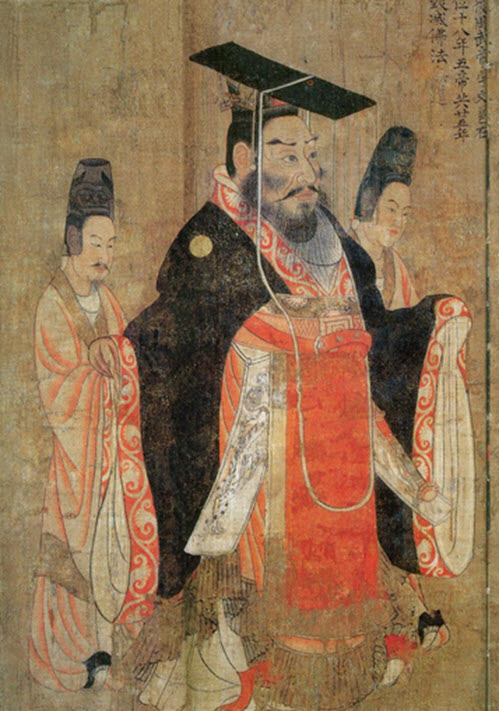Printing was invented in China during the Tang Dynasty (618-906 AD). The first mentioning of printing is an imperial decree from 593 AD, in which the Sui Emperor Wen-ti orders Buddhist images and scriptures to be printed.

The earliest form of Chinese printing relied on blocks cut from wood. These blocks were used to print textiles and reproduce Buddhist texts. Short religious texts printed in this fashion was carried as charms.
Eventually, the Chinese also began printing longer scrolls and books. One of the oldest surviving books is a Buddhist scripture dated to 868 AD. It was found in a cave near Dunhuang, a major stop on the Silk Road.
We also know that comparatively large quantities of books existed in Shu in the 800s and could bet purchased from private book . Shu was an ancient state in what is now China’s Sichuan Province.
As the 9th century gave way to the 10th, book printing seems to have become well-established and something that was carried out in many different parts of China. Examples of what was printed are Buddhist scriptures, Confucian scriptures, dictionaries, and books about mathematics. By the year 1000 AD, paged books had largely replaced scrolls.
In the 11th century, movable type was invented in China. The combination of movable type and the invention of comparatively inexpensive paper (as an alternative to the very expensive silk fabrics used before), helped make printed books much more widely available in China during the Song Dynasty (960 – 1279).
How early Chinese woodblock printing was done
- First, the text was written on a piece of thing paper.
- The paper was glued face down onto a wooden plate.
- With the written characters as a guide, characters were carved out to make a wood-block printing plate.
- The wood-block printing plate was used to print. An expert printer could print 2,000 or more sheets per day from one plate.
As you can see, a new wood-block printing plate had to be carved from scratch for each page, so printing a whole book required numerous of bespoke plates.
Movable type
Movable type was invented in the 1040s by a commoner named Pi Sheng. Instead of carving a unique wood-block plate for each page in a book, he used movable Chinese characters that could be fastened on a plate, used for printing, removed, and fastened again in new spots on the plate to create a new text.
Each of Pi Sheng’s movable types had one Chinese character on it, carved in relief on a small block. The character was carved into moistened clay, and the type was then hardened by fire to make it more durable.
The plate used was made from iron, and a removable resin-based glue was used to glue on the types prior to printing.
For many centuries, wood-block printing and movable type printing existed side by side in China.
Two color printing
The earliest known example of two color Chinese printing is from 1340 AD. The two colors are black and red.